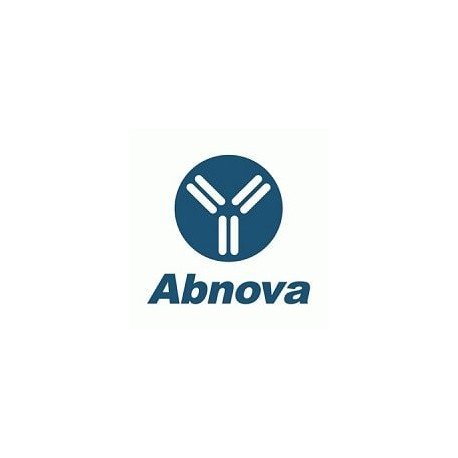Cart 0 Product Products (empty)
No products
To be determined Shipping
0,00 € Total
Prices are tax excluded
Product successfully added to your shopping cart
Quantity
Total
There are 0 items in your cart. There is 1 item in your cart.
Total products (tax excl.)
Total shipping (tax excl.) To be determined
Total (tax excl.)
Data sheet of RELA polyclonal antibody
| Brand | Abnova |
| Product type | Primary antibodies |
| Reactivity | Human |
| Host species | Rabbit |
| Applications | WB,ELISA,ICC,IHC,GSA,IF |
More info about RELA polyclonal antibody
| Brand: | Abnova |
| Reference: | PAB10290 |
| Product name: | RELA polyclonal antibody |
| Product description: | Rabbit polyclonal antibody raised against synthetic peptide of RELA. |
| Gene id: | 5970 |
| Gene name: | RELA |
| Gene alias: | MGC131774|NFKB3|p65 |
| Gene description: | v-rel reticuloendotheliosis viral oncogene homolog A (avian) |
| Immunogen: | A synthetic peptide (conjugated with KLH) corresponding to N-terminus end of human RELA. |
| Form: | Liquid |
| Recommend dilutions: | Western Blot (1:2000) Gel Supershift Assay (0.5-1.0 ul per assay) Immunohistochemistry (1:200) Immunofluorescence (1:200) The optimal working dilution should be determined by the end user. |
| Storage buffer: | In 20 mM KH2PO4, 150 mM NaCl, pH 7.2 (0.01% sodium azide) |
| Storage instruction: | Store at 4°C. For long term storage store at -20°C. Aliquot to avoid repeated freezing and thawing. |
| Quality control testing: | Antibody Reactive Against Synthetic Peptide. |
| Note: | This product contains sodium azide: a POISONOUS AND HAZARDOUS SUBSTANCE which should be handled by trained staff only. |
| Product type: | Primary antibodies |
| Host species: | Rabbit |
| Antigen species / target species: | Human |
| Specificity: | The epitope recognized overlaps the NLS of the p65 subunit of the NFkB heterodimer. Therefore, This antibody selectively binds to the activated form of NFkB. |
| Reactivity: | Human |
| Application image: |  |
| Application image note: | Immunofluorescence microscopy of RELA polyclonal antibody (Cat # PAB10290) was used at a 1 : 200 dilution to detect RELA in TNF stimulated DU 145 cells. Image shown is at a 1 : 400 magnification. Tissue was fixed and prepared as above. |
| Applications: | WB,ELISA,ICC,IHC,GSA,IF |
| Shipping condition: | Dry Ice |
| Publications: | Nuclear uptake control of NF-kappa B by MAD-3, an I kappa B protein present in the nucleus.Zabel U, Henkel T, Silva MS, Baeuerle PA. EMBO J. 1993 Jan;12(1):201-11. |


